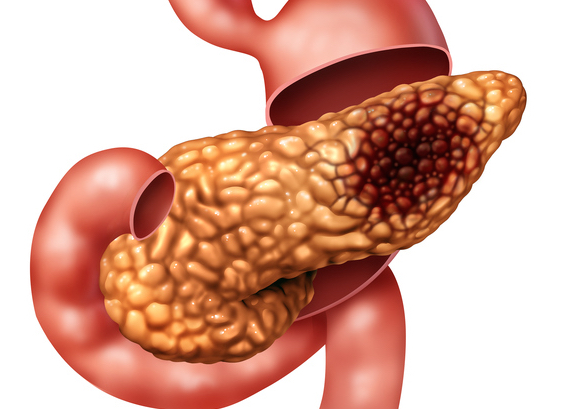
New research from a team of investigators at the Mayo Clinic Comprehensive Cancer Center has found that the use of positron emission tomography (PET) with 18-fluorodeoxyglucose (FDG) tracer adds prognostic benefit for assessing neoadjuvant chemotherapy response prior to surgery in borderline resectable/locally advanced pancreatic cancer patients.
Results of the research were published this month in JNCCN—Journal of the National Comprehensive Cancer Network.
“We were astonished by how metabolic imaging can now predict outcomes with high accuracy before any surgical intervention,” said Mark J. Truty, MD, of Mayo Clinic in a press release. “Not only that, but FDG-PET response was the single largest preoperative predictor of survival for these patients. FDG-PET decisively identified more than 85% of the patients suspected to have major pathological responses. This is a very impressive proportion and better than the currently-available biochemical response assessment through CA 19-9 levels alone, and far superior to standard imaging, which is not at all predictive.”
Prior research has shown that measuring the biochemical level changes in CA 19-9 is either inconsistent or not possible in most pancreatic cancer patients, and traditional imaging modalities such as CT and/or MRI are ineffective at predicting outcomes, a hindrance for clinicians as they try to develop appropriate treatment regimens for patients with this hard-to-treat cancer.
The new approach detailed by the Mayo researchers could significantly change prognostic approaches taken for pancreatic cancer treatment and pre-surgery decisions.
“Previously, we needed to wait until after complex surgery to tell how the pancreatic cancer responded to the neoadjuvant therapy,” said lead researcher Amro M. Abdelrahman, MBBS, MS, Mayo Clinic. “Now that is not the case. With FDG-PET we can tell patients how the cancer responded to neoadjuvant therapy before going through major surgical resection. Going forward, we encourage providers to combine all available response measures (i.e. clinical, radiologic, biochemical, and metabolic) to make suitable decisions about neoadjuvant therapy alterations and final decisions for surgery or no surgery on a case-by-case basis.”
The study examined the outcomes of 202 patients with borderline resectable/locally advanced pancreatic cancer who received either mFOLFIRINOX or gemcitabine/nab-paclitaxel as first-line neoadjuvant chemotherapy. When FDG-PET captured major metabolic response in patients who had received this therapeutic approach, it was associated with major pathological response and tumor reduction, regardless of measured CA 19-9 levels.
However, the research further showed that combining the FDG-PET method with biochemical response via CA 19-9 levels was even more predictive of patient response.
“Given the very aggressive nature of pancreatic cancer, knowing if a pancreatic tumor has good response to the pre-operative treatment indicating a favorable outcome and better survival after surgery—versus no response or only partial response, indicating more aggressive tumors that may necessitate additional or alternate preoperative therapy—has been particularly challenging for clinicians for a long time,” noted Mahmoud M. Al-Hawary, MD, a radiologist at University of Michigan Rogel Cancer Center, who was not involved with this research.
Al-Hawary also serves as a member of the NCCN Guidelines Panel of Pancreatic Adenocarcinoma added that clinicians are in need of a different method of imaging pancreatic tumors and not the current methods that show simply the size or shape of the tumor. Better information for oncologists would be information about the tumor’s function viability to improve on the limited information provided by existing biomarkers.
“PET imaging can provide this functional information by showing presence or absence of tumor activity, which has been extensively proven to predict tumor response in various solid tumors,” Al-Hawary said. “This study suggests PET can demonstrate the same in pancreatic cancer, to help stratify patients and guide treatment before they go to surgery, in conjunction with the existing blood and standard imaging indicators. Further study in wider patient groups in different institutions will help confirm this value and could potentially change practice patterns.”













